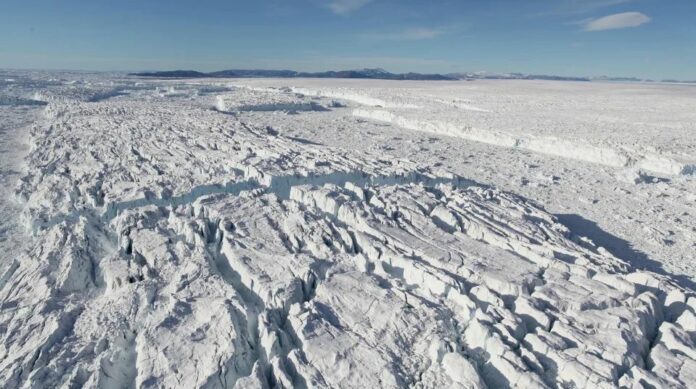
At the top of the world, northern Greenland’s huge glaciers — long thought to be relatively stable — are in trouble, a new study shows.
As the ocean warms, Greenland’s last remaining ice shelves are rapidly weakening, destabilizing the nearby glaciers and threatening potentially “dramatic” consequences for sea level rise, according to the study published Tuesday in Nature Communications.
Ice shelves are tongues of floating ice that jut out over the ocean and act as dams that hold back glaciers on land and slow ice loss. When they melt and weaken, more of the land-based ice is able to slide into the ocean, adding to sea level rise.
Scientists analyzed eight ice shelves buttressing glaciers in northern Greenland, which together hold enough ice to raise sea levels by 2.1 meters — nearly 7 feet — should they break down and melt completely.
“These glaciers are among the most important of the ice sheet,” Romain Millan, a glaciologist at the Grenoble Alpes University in France and an author of the study, told CNN. “They are the largest glaciers of Greenland.”
While glaciers in other parts of Greenland started to lose mass in the 1980s and 1990s, he said, so far, those in northern Greenland “have remained relatively stable.”
But this appears to no longer be the case, according to the study.
West Antarctica — home to the Thwaites Glacier, also known as the “Doomsday glacier” — is the continent’s largest contributor to global sea level rise.
Source: cnn.com









